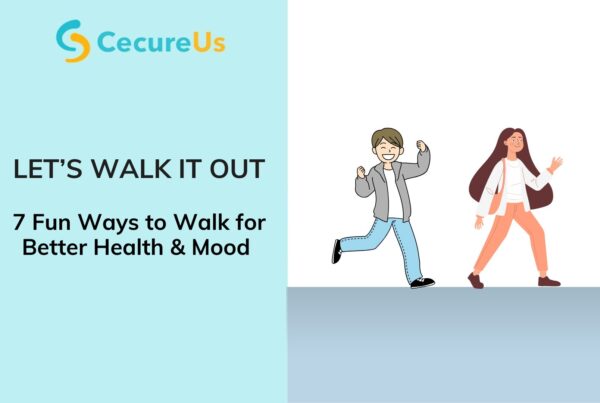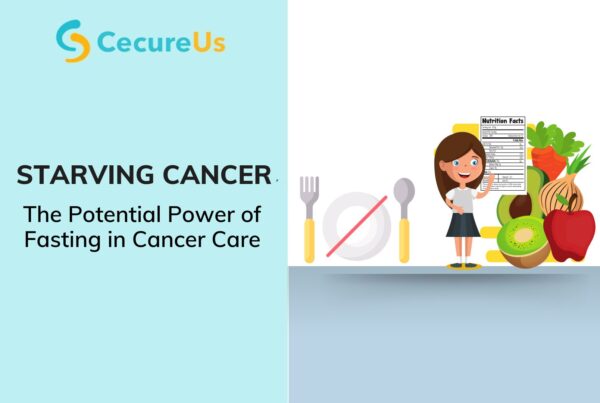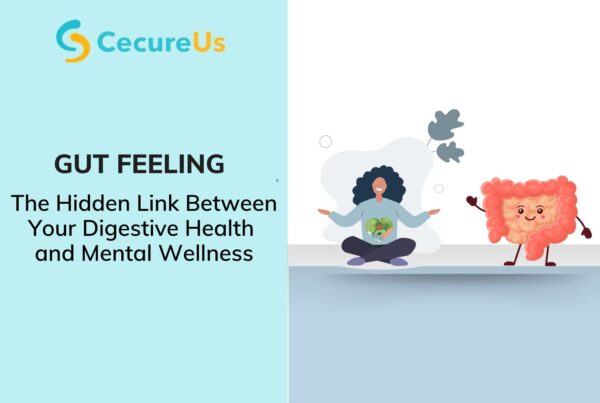2020 had hit us all below the belt with a new virus, strangling us inside our homes with Lockdowns. Many lost their jobs, their livelihoods dissipated, families were torn apart, the global economy had gone for a toss, and we saw many such disasters. Optimism had gone out of the picture, with health problems and negative emotions taking over our wellness.
With the advent of a new year, 2021, came new hopes. Things were starting to get better, but just in a few months, we have all discerned that this year is no different too. Emotional wellness still appears like a distant dream. The ‘second wave’ of the global pandemic is terrifying and has pushed us all into despondency. The problems and the associated negative emotions we are experiencing have only gotten worse. Even with vaccinations offering a slight ray of hope, a dark, gloomy mass of negative energy is hovering over our minds, grappling us in fright, refusing to vanish, tossing our emotional wellness aside.
Although we keep looking for a silver lining, it seems far away. Worries, health problems, and uncertainty have crept into every nook and corner of our lives, proving that even staying alive is a blessing, let alone optimistic.

With most of us sailing in the same boat when it comes to our inability to cope with the prevailing situation, seeking respite or optimism of some form, here are a few excerpts from the wellness session conducted by CecureUs with an expert psychologist Ms. Hemalatha Swaminathan who has shared tips and tricks to stay optimistic when we are put through testing times.
The first approach to optimism is to believe that there is no problem without a solution. Our thoughts define the intensity and magnitude of our problems; Problems have no dimensions or size, be it our struggles with our family, relationships, children, professions, finances, or the current covid 19 crisis. The bigger we think a problem is, the scarier and more negative we tend to become. A solution-oriented approach to any problem alleviates stress levels and helps us have a clear vision to subdue unfortunate predicaments, leading to optimism and overall wellness.
We have all, at some point, become victims of Learned Helplessness. Now, what exactly is that, we may think. In psychology, Learned helplessness is a negative state of mind that a person experiences by being repeatedly subjected to stressful and problematic situations. The person falsely and negatively perceives that there is no way out, albeit available opportunities to achieve wellness and break free from problems and pessimism. Our psychologist Ms. Hemalatha shares a few signs to identify learned helplessness in an individual.
- Loss of motivation, where the person loses the zeal to fight when faced with problems, surrenders to adversities and mentally assumes the role of a
- Refusal to learn from mistakes, where the individual blames every problem and negative encounter on destiny. Mistakes are no longer comprehended as learning There is neither optimism nor wellness, physically and mentally.
- Depression and despair, where the person focuses only on the negative emotions around, turning a blind eye to wellness and
- Inability to make life-changing decisions, where the person feels they have no control over their problems and negative consequences of life, cannot change the course of life, and accepts life as it is.
How do we overcome the effects of learned helplessness and focus on optimism and wellness? By practicing Learned Optimism, which is the ability to view the world with a positive outlook.
Optimism – It is not just a mindset. It’s a behaviour – Larry Elder.
How often have we found ourselves stuck with invariable questions of what, why, how, when, etc.., while deciding on anything new, be it a new job, moving to a new city, a new hobby, or the kind? This is called ‘Negative self-talk’, which means doubting and questioning one’s own abilities, defying our self-esteem and mental wellness.
Optimism = Challenging negative self-talk + Replacing negative thoughts with positive ones.
Although the equation to optimism sounds simple, it requires perseverance to achieve it. Optimism is an acquired skill.
At this point, the ABCDE Model to develop and practice learned optimism comes in handy. The first three steps are the actual problems, and the next two steps are the ways to react to instil the habit of optimism and thereby achieve wellness.
Adversity: A person faces trouble with any new/existing ventures or tasks. For example, to lose weight or quit smoking or finish a book.
Belief: The person believes that they are no good or cannot achieve the desired goal when faced with a problem or adversity.
Consequence: The person loses motivation and begins to back down or puts in fewer efforts to solve the problem.
Dispute: This is the prime step to learned optimism, where the person disputes the negative self-talk and considers all the times they achieved their goals in the past. For example, At least I have not gained any kilos, or I have tried reducing from 2 packets a week to 1 a week. This is the starting point toward wellness and optimism.
Effect: With the negative talk disputed, wellness/optimism set in. The person feels renewed and energized. There is a new inspiration to work hard to achieve the set goals without backing down.

Today, we stay confined to the walls of our homes for our safety. The world is at our fingertips despite lockdown, thanks to the internet. There is Information Explosion everywhere. The news and social media are flooding with enormous negativity, a lack of factual evidence, gossip, and messages about the global pandemic and its effects on wellness and health. As a matter of fact, this has resulted in learned helplessness in many individuals. Restricting our exposure to social media and refraining from doomscrolling can be a turning point in our approach to embracing optimism.
These challenging times call for grabbing inspiration from people and things around us to keep going and embrace optimism. Read stories of great personalities who served/serve as exemplary examples of Resilience and emotional wellness. Diverting ourselves from negative thoughts by picking up a hobby like painting, reading, dancing, journaling, gardening, or indulging in meditation/breathing/relaxation techniques for holistic wellness has been proven effective in training our minds to welcome optimism into our lives.
Gratitude is a virtue to practice, no matter how difficult our situations, problems, and relationships are. It is crucial that we feel thankful for what we have to achieve emotional wellness rather than focusing on what we have lost. Helping people around us by any means can bring about smiles on their faces and happiness and contentment in our lives.

Acknowledging our problems and devising a strategy to surmount our negative emotions are the key to success. Here are the responses of Ms. Hemalatha to the audience questionnaire on optimism.
Times are tough. How do we manage our kids during these times?
Ms. Hemalatha: We have to remember that their situation is three times worse. Our kids have so much energy, and they have no proper way to vent it out. So please be patient with them. Talk to them and understand their feelings. Establish a bond with them over their favorite games. Control and filter out the negative news that will upset them. Be kind and encouraging, and our kids will reciprocate the same.
How do we comfort someone grieving the death of a family member?
Ms. Hemalatha: No amount of comforting words can bring back their loved ones. Sometimes, the best practice is to remain silent and let them know we are there for them through our actions and keep them in our prayers.
How do we respond when someone in the family is encountering negative thoughts?
Ms.Hemalatha: Empathize. Be kind with your words and comfort them with an encouraging attitude. Radiate optimism always. Things will soon fall in place.
Sometimes when you are in a dark place, you think you have been buried, but you have actually been planted – Christine Caine.
The story of the Chinese bamboo tree never fails to amaze us. The seed of the tree remains buried in the soil for four to five years, strengthening its roots and testing the patience of its master. But once the shoot emerges, it shows tremendous rapid growth by reaching about 80 feet in just six weeks. This story makes us take the plunge towards optimism and hope. Similar to the Chinese Bamboo tree, let us learn to look at this pandemic lockdown as a way to expand our roots, strengthen our foundation, bond with our family, and learn new skills. Let’s never cease to put in our efforts to propel our growth curve upwards. Remember, there is always a light at the end of the tunnel, where success awaits! Cheers!
For more such articles and expert psychologist talks, check out our Employee Assistance Program. Do reach out to us for counselling needs.





7 Comments